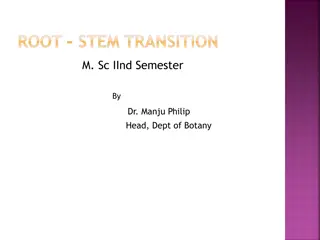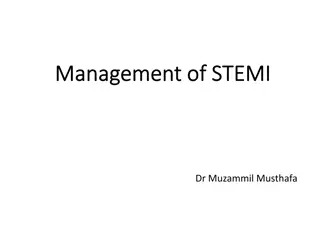Non Coronary Vascular Stents
Safe scanning of patients with non-coronary vascular stents (NCVS) in MRI settings in NHS Scotland. It covers key questions regarding the safety of patients with NCVS, including risks associated with MRI at different strengths, timing of MRI post-stent implantation, and the safety of various stent materials. The review emphasizes the importance of considering risk factors and following prudent steps when scanning patients with NCVS. Resources used for this guidance include MRI safety reviews, information from stent manufacturers, peer-reviewed literature, empirical evidence, and internet searches.
Download Presentation

Please find below an Image/Link to download the presentation.
The content on the website is provided AS IS for your information and personal use only. It may not be sold, licensed, or shared on other websites without obtaining consent from the author. Download presentation by click this link. If you encounter any issues during the download, it is possible that the publisher has removed the file from their server.
E N D
Presentation Transcript
Non Coronary Vascular Stents NHS Scotland GISP Guidance Recording Authors: Stephen Gandy, John Foster Medical Physics Review: John Maclean Radiography Review: Thomas Dockerty
Overview Overview provided to support the use of an NHS Scotland GISP for scanning of patients who have non-coronary vascular stents (NCVS s) i.e. associated with the cardiovascular system away from the heart The review does not cover coronary stents, and neither does it cover any non-vascular stents (e.g. oesophageal stents)
Key Questions Can NCVS patients be scanned safely; or any required conditions? Do the risks associated with NCVS MRI at 1.5T and 3.0T differ? Would an MRI performed less than 6 weeks after stent implantation be safe to perform? Would MRI in normal mode be sufficient to mitigate RF heating risks? Are multiple overlapping stents likely to pose an RF heating problem? Are older stents likely to present a more serious MR safety issue than more modern models? Are NCVS that are implanted internationally as MRI safe as those implanted in the UK?
Resources Used Review of MRI safety.com Review of UK MRI Mail Bases and Social Media Groups Review of information provided by stent manufacturers Review of the relevant peer-reviewed literature Review of empirical evidence Review of key internet searches
Risk Static Field Composition - nitinol, 316L stainless steel, or cobalt alloy. Less commonly, platinum, carbon, gold, or tantalum Most stents exhibit non-ferromagnetic or weak ferromagnetic behaviour at both 1.5T and 3T Evidence suggests that it is safe to scan patients with NCVS s at 1.5T or 3.0T immediately after stent deployment, if clinical situation requires it Although MR may be deferred for 6 to 8 weeks in stent patients, there are no good clinical data or rationale to support this delay However, 6-8 week delay rule is a sensible prudent first step to support the initial use of the GISP Any NCVS implants that are <6 weeks post-implantation should be referred for standard MRI safety review
Risk - RF Power Deposition A few NCVS have exposure limits as low as 0.5 W/Kg for 15 min of continuous scanning; normal mode theoretically not enough Cooling effect of blood flow - limits temperature rise during MRI RF critical length ~25 cm (1.5T), ~12 cm (3T). Overlapping stents, unlikely to form a true continuum Empirical review no identified MR safety events when in normal mode , but small delay between successive sequences may help to further minimise risk associated with continuous scanning Recommended delay ~20 sec between successive sequences to avoid continuous scanning
Risk - Date & Geographical Location Patients with vascular stents have been scanned safely using MRI since at least late 1990 s, probably for lot longer No data to support using a date cut-off for NCVS deployment No information of any NCVS s that form contraindications to MRI at 1.5T or 3.0T, despite extensive reviews and plenty of empirocal evidence no identified geographical restrictions
Summary Recommendation Scanning may be performed at 1.5T or 3.0T for patients who have NCVS s in-situ that have been deployed correctly and are functioning as intended, with the following conditions: Normal mode of operation to minimise RF power deposition. A short delay (20 sec) to be routinely implemented between successive pulse sequences to avoid continuous scanning Scanning may occur at any time after NCVS deployment, but if required within 6 weeks of implantation then it should be referred for a standard MR safety assessment. No report of stent malfunction 1.5T or 3.0T Implanted > 6 weeks ago No report of implantation in a non qualifying country? 20 second gap between successive sequences
NCVS - Flow Diagram Patient has NCVS Is the device in place as expected, and functioning correctly? N Y Has device been inserted for longer than 6 weeks? Send for MR Physics Safety Review Y N Scan at 1.5T or 3.0T in normal mode, and ensure 20 second gap between sequences Send for MR Physics Safety Review

































